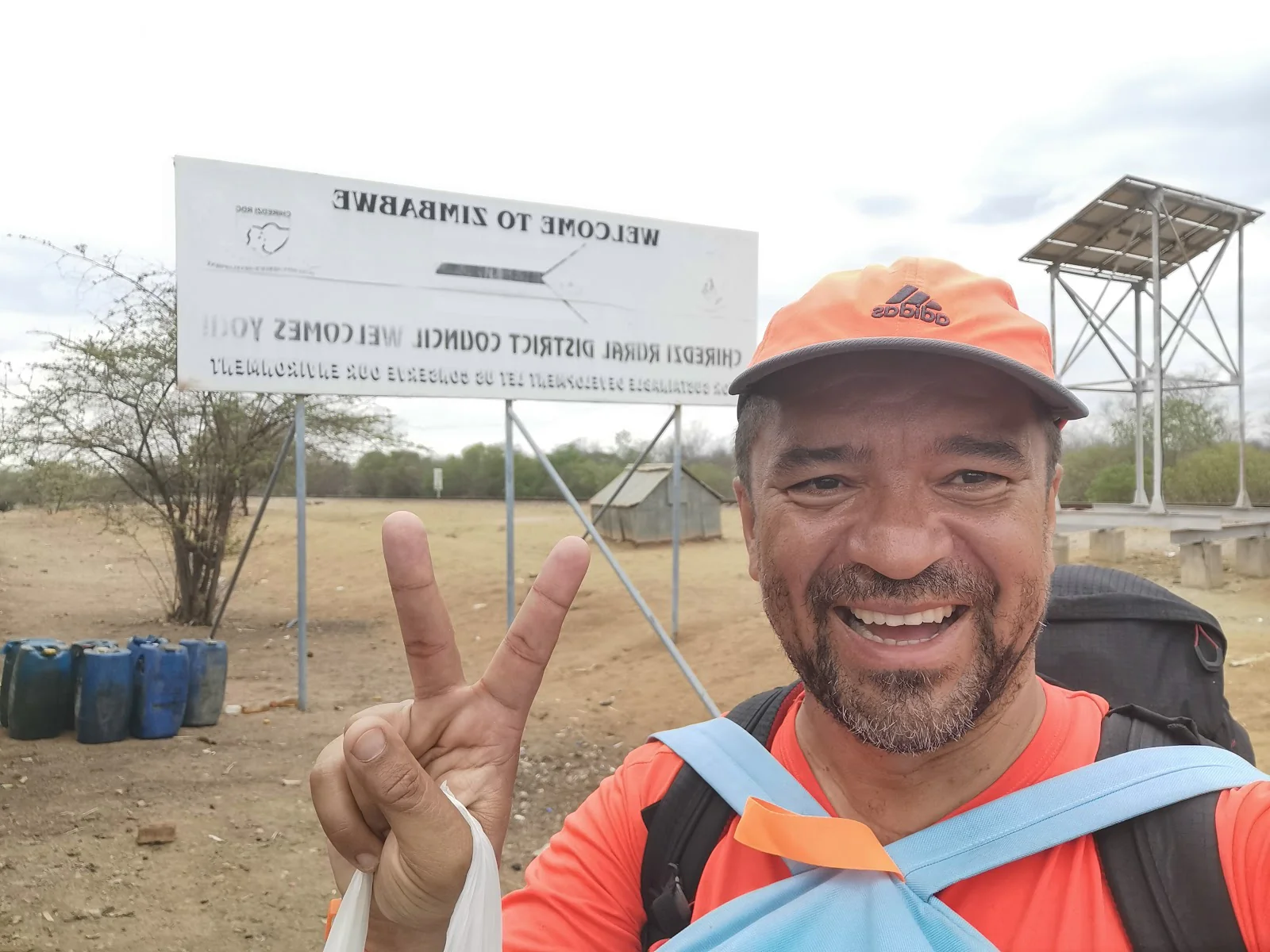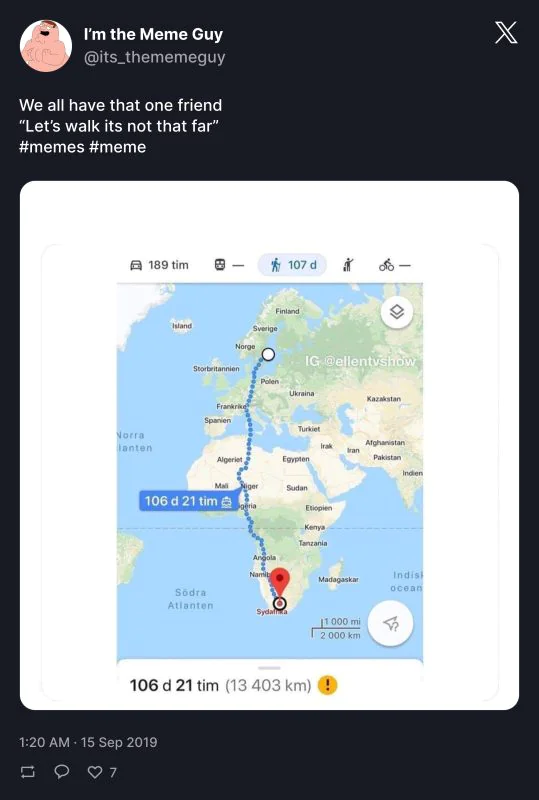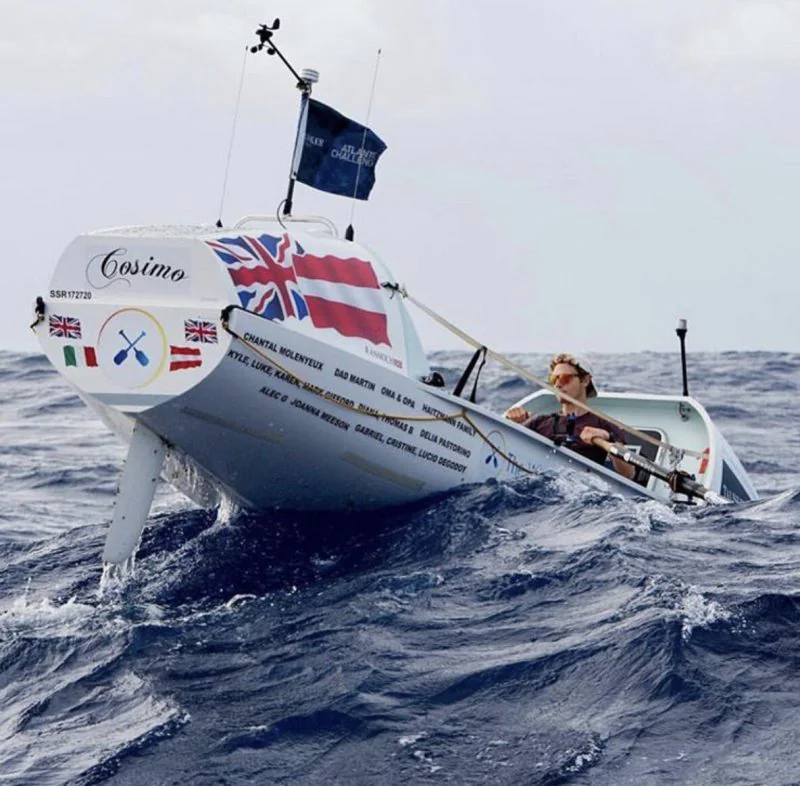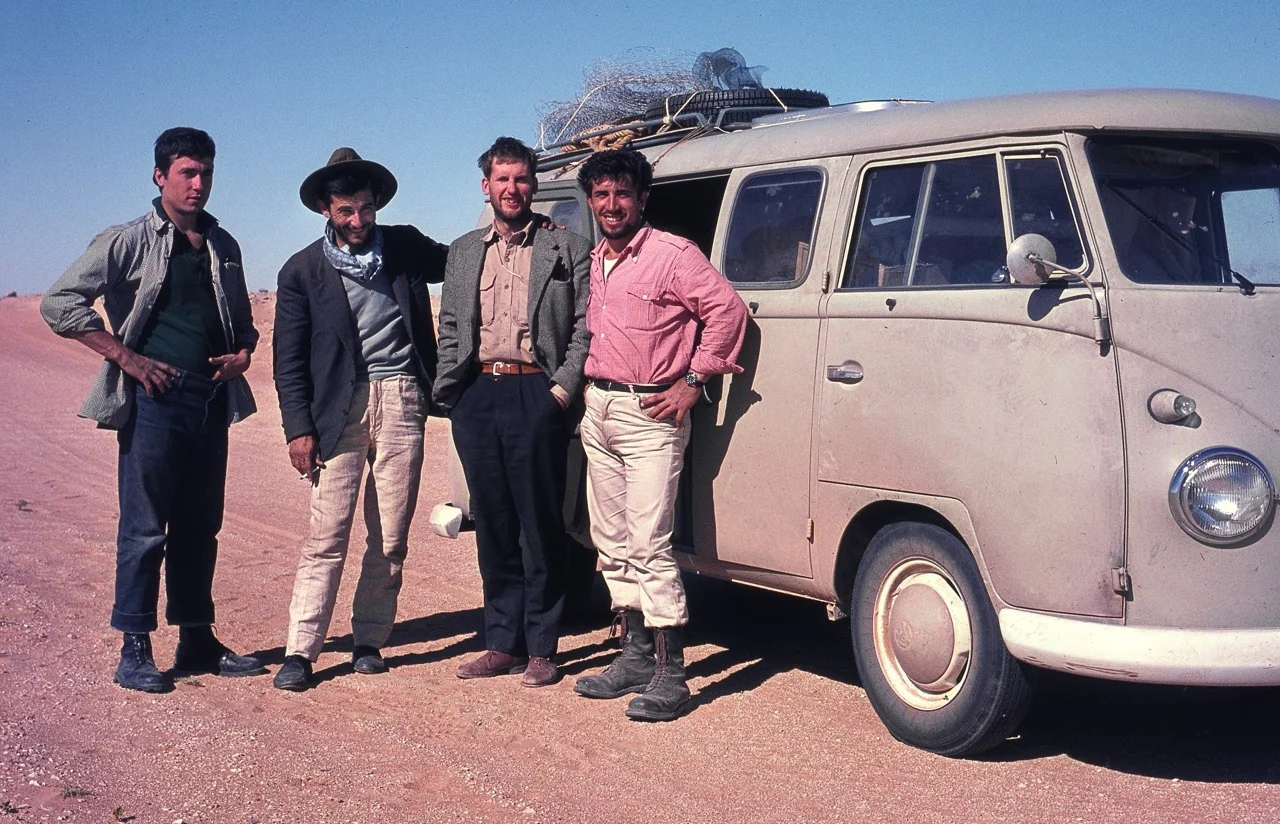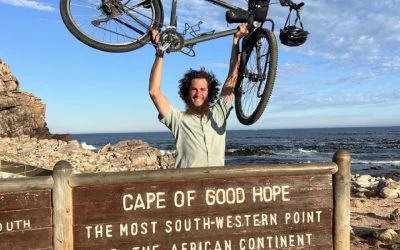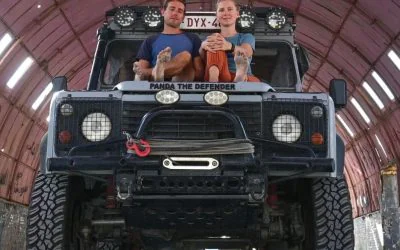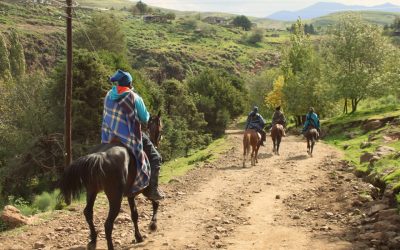In its broadest sense, overland travel means travelling without taking a plane. But this would perhaps imply that every short road trip is the overland, which isn’t quite correct. In fact, overland travel has an association with a longer, slower journey, with the traveller often not having a timetable and happily going alone while taking in the surroundings at a snail’s pace, or when transport becomes available. In other words travelling overland is far more than a weekend away or a casual road trip. And usually it involves considerable preparation.
Slawek Muturi is a notable overland traveller who visited every country in the world twice.
As no clear definition exists, no matter how hard we searched, perhaps we would like to suggest one of our own, which captures the essence of overlanding.
In this article, we will try to delineate the various types of overland travel while also identifying some notable overlanders who have caught our attention. Our list of people is certainly not exclusive, but mainly aimed at introducing some amazing people. We will then also review some popular overlanding journeys, though the reality is that, as long as there is land, any route is possible.
WALKING
This is possibly the most extreme of the overland travel choices. Ideal for those with no budget but lots of time, and a decent physical shape, the problem with this one is that you are exposed to the elements and possible extreme weather conditions. On the other hand, with endless time, this can be the best way to really understand the culture and geography of an area.
Paula Constant is an example of a traveller who spent 3 years walking from the UK to Africa and across the Sahara desert.
Tom Boerman from the Netherlands set off in 2020 aiming to across all 7 continents on foot after selling all his possessions. In 2022 he was reported to have already traversed Europe, the Middle East and part of North America, two years into his endeavour. His average ‘walk’ is reported to be approximately 1000 kilometers a month. Currently he has done 15,000 kilometers.
CYCLING (BICYCLE)
This is where we really start to see more possibilities. Cycling for months is a feasible way to see a lot with minimal costs, so it is highly probable even the best bicycle will require considerable love when required to traverse huge distances. The traveller involved will also have to be in decent physical shape while also ensuring the bicycle is not stolen along the way. Yet, this is a very sustainable way to travel, minimizing carbon footprint to the extreme while at the same time guaranteeing a certain possible pace, especially in flatter terrain.
One of the more notable cyclists is Roberto Helou from Lebanon/France, a nominee for our award in 2023, who cycled from Cairo to Cape Town. You can look forward to an interview with Roberto this month!
Florence Ryan from Germany cycled 10,000 km across Africa and has become a known travel and adventure film-maker.
Esme Moore is a young woman cycling from England to Singapore for charity. Her solo bike ride is expected to take at least a year.
Dragan Sibalic is a Serbian cyclist who rode 15,000 kilometers from Europe to Japan, among many other adventures. He is currently cycling from Turkey to Mount Everest in Nepal.
NomadMania’s first Lifetime Travel Achievement award winner Heinz Stücke cycled 609,000 kilometers in 48 years between 1962 and 2010, ultimately visiting every country.
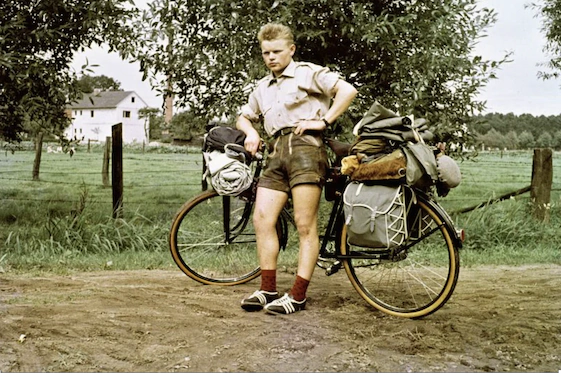
Photo credit: Heinz Stücke
MOTORBIKE
And this is where we get into a whole niche of travellers, who invest a considerable amount of funds for what are essentially mobile homes that accompany them on long journeys. This is far from a cheap way to travel, as the motorbikes involved are costly and there are additional expenses as well. On the other hand, a good motorbike can ensure the pace that a traveller desires, including the ability to cross greater distances fast. On some roads which are not really ‘roads’, a motorbike may prove much more versatile and able than a larger vehicle.
Among the biggest traveller who has gone around on motorbike is Ilario Lavarra from Italy, who has travelled to 101 countries on a 50-year old Vespa, covering 220.000 kms.
Ryuhei Nukaga from Japan quit his job and started a Tenere700 solo world journey.
And let’s not forget Argentina’s Emilio Scotto, who in 2009 held the World Record for the world’s longest motorcycle ride spanning 10 years and more than 700,000 kms.
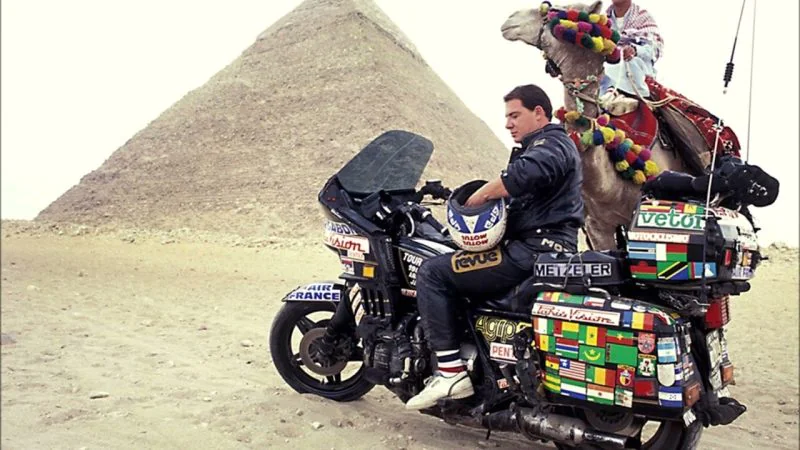
Photo credit: Emilio Scotto via emilioscotto.com
Sam Manicom is one of the leading authors in the field of overlanding by motorbike. From 2006 to 2015 he was one of the main organisers of Horizons Unlimited, the world’s largest adventure motorcycle travel event.
(PARTIALLY or FULLY) HITCH-HIKING
More a style of travelling, this is extremely common in certain parts of the world (Central Asia for example) even for everyday travel of locals. This can be a great way to experience local life and make genuine contacts which sometimes may lead to invitations and an even slower travel pace. Nevertheless, in many places this may be dangerous and ill-advised and is best attempted only when travelling in small groups rather than individually.
One of the most known hitchhikers is Bruno Barbosa from Portugal, who has completed 92 countries by hitch-hiking and keeps going strong.
View this post on Instagram
Timo de Jong is currently hitch-hiking from Southampton to South Africa and documenting his feat day by day.
At only 21, Tim Schuijt from the Netheralands had a plan of hitch-hiking from his country to Hong Kong. In the process, he has become a talented videomaker who is nonstop on the road.
Lucas Venner from France decided to hitch-hike the entire way from France to Australia, starting in early 2023; he had to take a plane from Dili, Timor Leste, to Darwin as the only exception to a road over 50,000 kms across 25 countries and more than 1,000 drivers.
Maheen from Kerala is travelling from India to Europe by hitch-hiking on a total budget of $5 a day. His YouTube channel is aptly entitled Hitchhiking Nomad.
ROWING
One of the more unique and physically demanding ways to travel the world is by rowing. This involves crossing vast bodies of water, often oceans, powered solely by human strength and endurance. Rowing expeditions require meticulous planning, mental resilience, and peak physical condition, as the traveler faces harsh weather conditions and long periods of isolation.
A prime example is Lukas Haitzmann, who became the youngest person to row from Europe to America, setting a world record for rowing across the Atlantic. His incredible journey from the Canary Islands to Antigua at just 18 years old is a testament to the dedication and bravery required to take on such an immense challenge.
PUBLIC TRANSPORT
This is perhaps the most common type of overland travel; trains, automobiles or occasionally ships are used to create an interesting and varied itinerary. There is little to add here as we assume every traveller has at least partially ‘overlanded’ in this way. Though once again, what makes it ‘overlanding’ rather than just a trip is perhaps a distinction that is blurred.
OWN VEHICLE
Another common one, with its own group of aficionados, is to travel in one’s own vehicle. There is no end to the possibilities here and to what kind of vehicle could be used. It could be a 4×4 which allows for extreme terrain but then doesn’t offer ‘lodging’, requiring camping or other options. Or it could be a camper or a converted truck which becomes a true home during the endless journey. While eliminating accommodation costs, the problem with these is often in congested urban areas, where it may be impossible to park them, or on bad roads off-the-beaten track. This is without even mentioning the often high consumption of fuel that increases the costs.
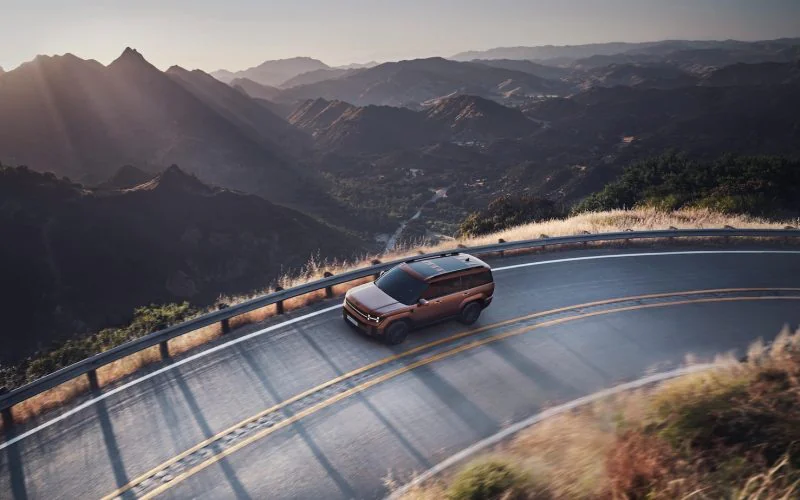
Credit: Hyundai Motor Group via Pexels.com
Andrew St. Pierre White, one of the world’s most prolific 4×4 writers, has published many books on 4X4 travel as well as some film projects. In 1993 he published his first book ‘The Complete Guide to Four-Wheel Drive in Southern Africa’. He is referred to as the David Attenborough of 4 Wheel Drive.
Charline Ribotta from France is notable as a rare solo woman overlander with her own vehicle. She drove in many countries in Africa and the Middle East in a Toyota Hilux Xtra cab.
Julian Jahns from Germany converted his Land Rover Defender110 into an optimal overlanding and off-road vehicle and travelled with his wife and dog around Africa.
Estelle and Dan from France renovated a Swiss military truck from the FBW AX40 collection from the 1950s, with the aim of going around the world on eco-volunteering.
Nate Merch from the US converted a number of vehicles and drives them as an overlander.
Sarah and Kevin McCuiston are the adults in a family of 4 adventuring around the US in a 2014 Toyota 4Runner.
Leigh and Steph from Australia and France, converted their 1995 Toyota Cruiser into a house and travelled through Australia and a number of other countries.
Jade and Idris, a couple from France / Algeria & Netheralands just started their overland experience in a Toyota Land Cruiser HZJ74.
Tine and Jelle, the couple behind Panda the Defender travelled from Belgium around the whole of the Middle East for two years. We will have the pleasure of an interview with them as well during October.
THE ‘THOR’
We are naming this after our award winner for Biggest Traveller 2022, Thor Pedersen a.k.a. Once Upon a Saga. Thor overlanded for almost 10 years without returning to his country of origin and stubbornly not flying. We are pretty sure that Thor used a combination of most of the aforementioned overland travel methods, and his endless odyssey should perhaps result in a totally new term – thorlanding perhaps? Here is the interview we had with Thor few years ago.

Credit: Torbjørn C. Pedersen
SOME OTHER NOTABLE OVERLANDERS
Other notable overlanders, who travel in a mixture of the ways noted above are the following.
Camilla and Franco from Italy with their popular blog sentimentoverland.com.
Josep Aguilar from Spain is a full-time Africa overlander.
Special mention of our member Eki Siivonen who back in 1962, in a Volkswagen, overlanded from Europe via Algeria and Mali to Senegal and then boarded a ship to South America where the overland travel continued.
Possibly the father of all current overlanders, once again putting Finland on the map as a ‘hub’ for pioneering travellers. But let’s also not forget the incredible woman overlander who was also a notable aviator, Eva Dickson. In the late 1920s and 1930s, she overlanded all the way to Kenya, and then in 1937 attempted an ill-fated car trip from Sweden to China via the Silk Road, however she ‘only’ made it up to Kolkata before dying in a car crash in Baghdad at the young age of 33.
